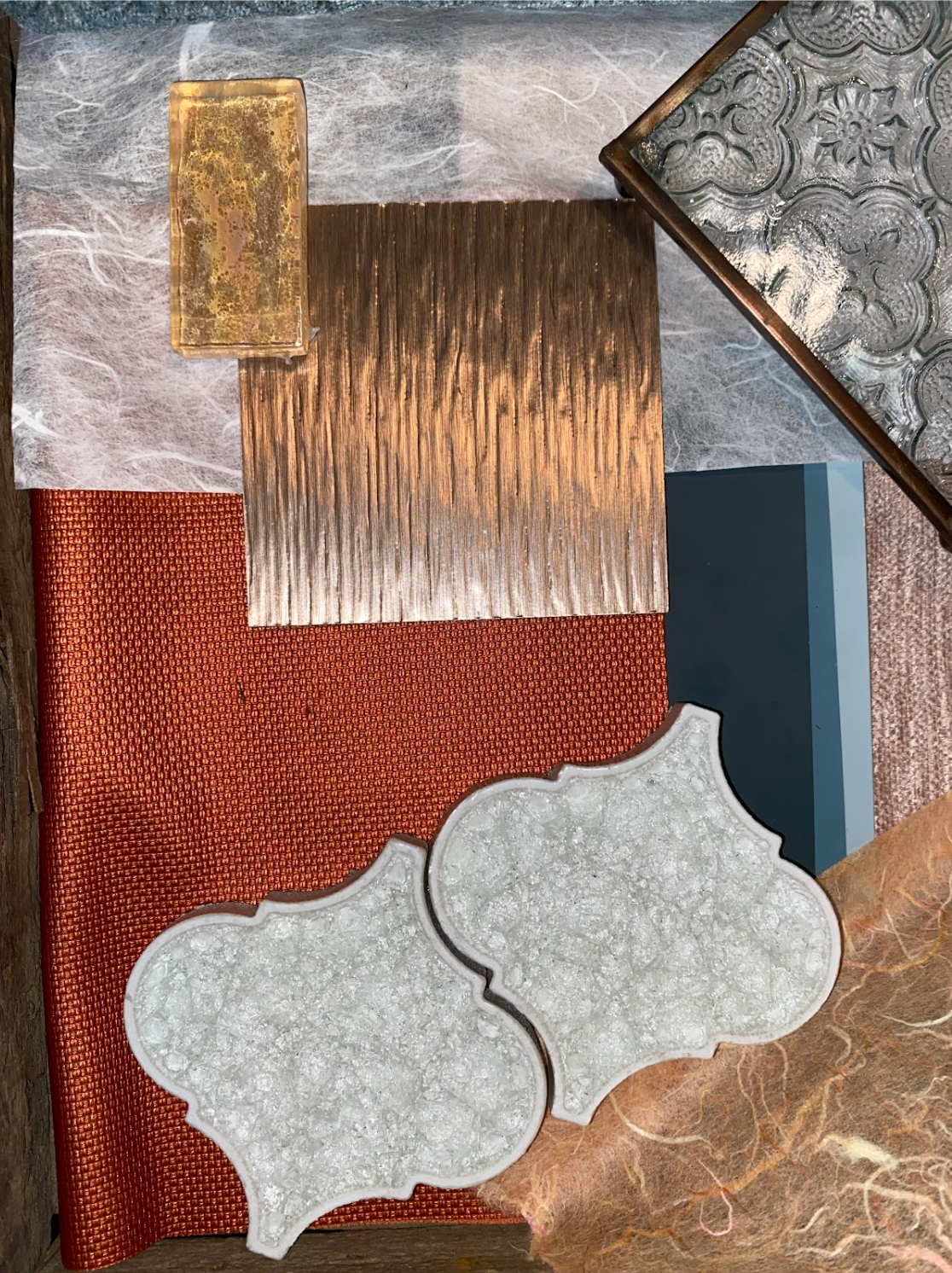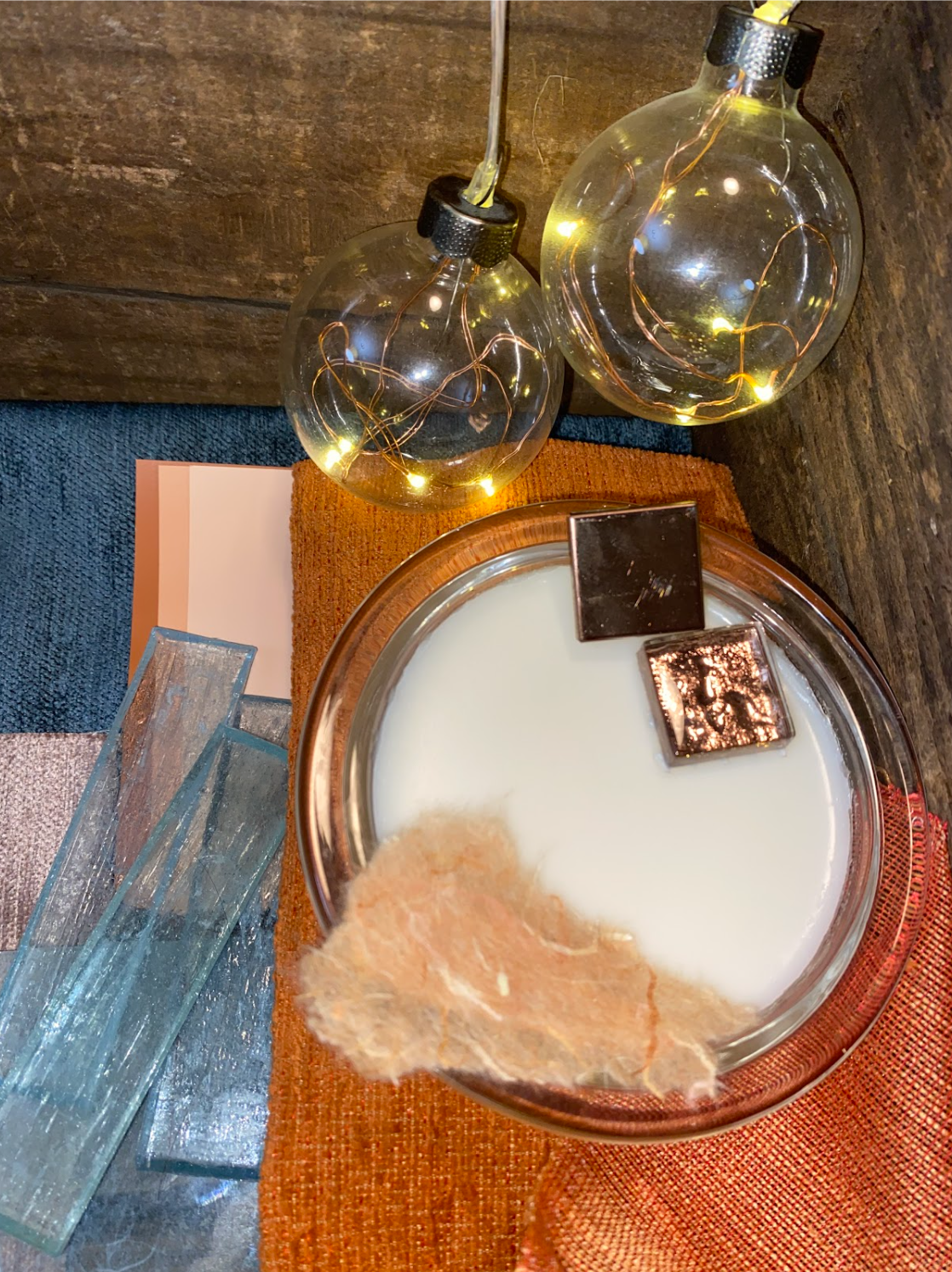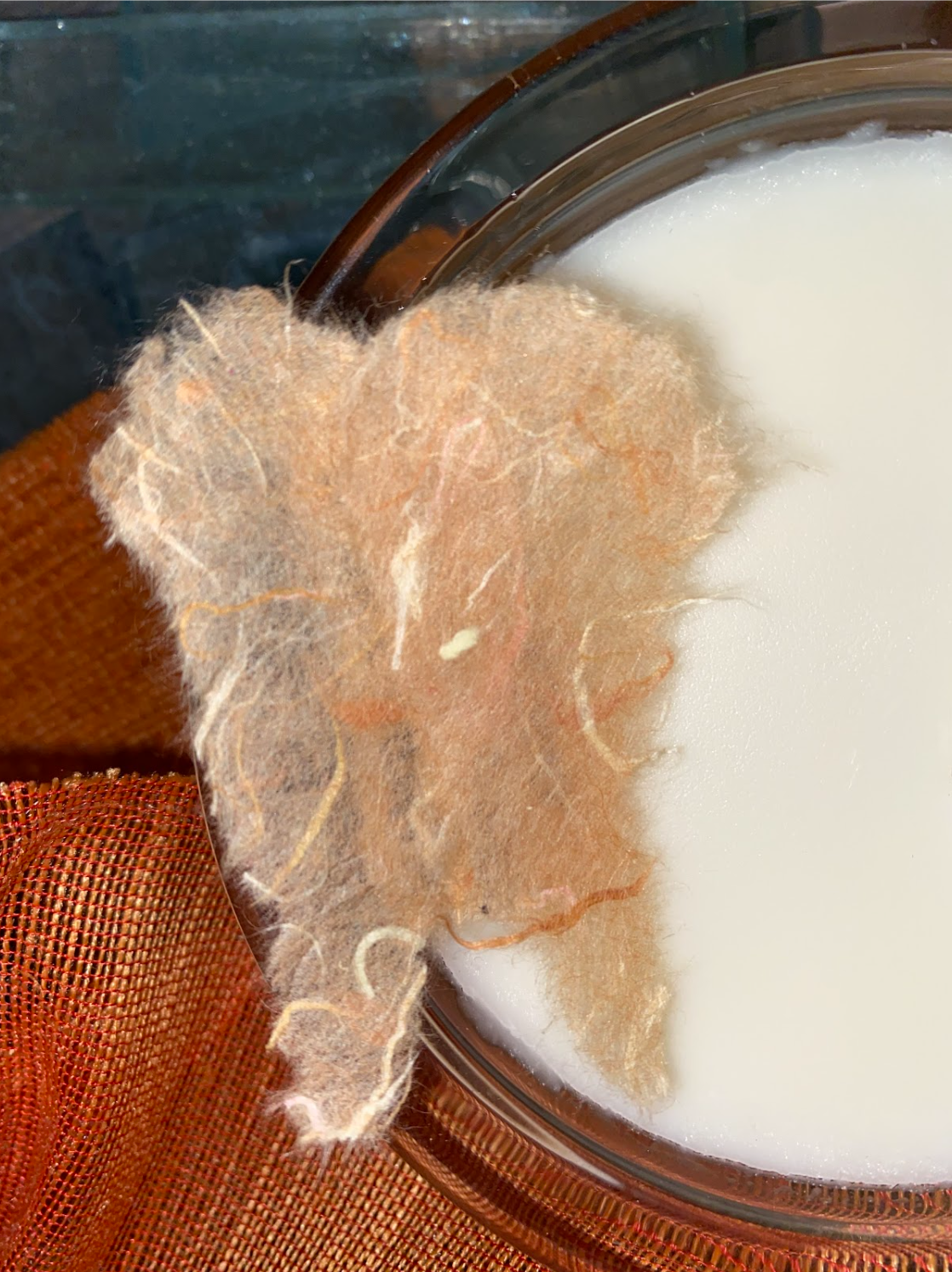Project Brief:
"Experiencing Materiality" was designed to be an introduction to the contribution that interior finish materials have to the holistic experience of an interior. The goal of this project was to create a material palette influenced by our interpretation of a haiku that we were assigned. The haiku was the inspiration that we needed to learn how to use as the direction of our design so that our material boards would be the essence of each of our poems. In the process of making the material palette, we were to make an attribute word diagram and an attribute imageboard, both of which to show the emotional and sensorial qualities of the haiku. Through those two steps, we were supposed to think about how the five senses could be linked to the poem and how we could make them evident by making our material palette sensorial. The limitations on the material palette include the following: at least eight different types of materials, a minimum of one "found" object, color, patterns/texture, and a sensorial element(s).
Process:
I started this project by making a mind map to help me better understand the meaning of the poem. To me, the haiku's main conceptual elements include beauty, the celebration of life, and rebirth, along with hopefulness, sunrise, and Heaven. The material application ideas that I pulled from the poem are mostly movement, delicate, and soft, but also elements of organic shapes, butterflies, flowers, airy, flowing, circles, darkness, blue, bright, colorful, gold, and wood.
After creating my mindmap, I started finding imagery that I felt went along with what I thought the poem was communicating and the attributes that I felt were the most important.
Starting from these images, I created my attribute imageboard. This board shows the emotional and sensorial qualities of my assigned haiku and inspired the materials that I selected for my final material palette.
Concept Statement: I chose to look into my poem more conceptually to draw inspiration from it for my material board, looking at the meaning of a fallen flower turning into a butterfly. I feel that this represents new life and rebirth, as something or someone died, shown by the flower falling towards Earth, but there is new life or the dead being saved when it changes to a butterfly. When choosing materials for this project, I kept with an overall theme of beauty, rebirth, and celebration of life with elements including organic, soft, and movement. When first coming up with a color scheme to start choosing my materials, I immediately went for yellow/orange and dark blue, as celebration and rebirth both make me think of yellow or gold, a cheerful color, but I also wanted to have some contrast with the dark blue and keep that slight hint of sadness of death that was in the poem. When choosing my materials, I gravitated towards those with more texture, especially those that were organic and showed lines to contribute to the veins within the materials of my inspiration images, relating to the veins that are seen in butterfly wings and flowers. When placing the materials within the box, I chose to show hierarchy to certain ones by placing them higher than others and overlapping them. Other details within the material box, such as the coppers were chosen because of the meaning of rebirth or being saved from the poem, as it made me think of Heaven and a lot of copper and gold, as well as the twinkling lights relating to rebirth. Since the poem talked about a flower falling and a butterfly, I felt that these would be represented in light or transparent materials because of the delicate quality of the flower and butterfly and the airiness of them gently falling. This can also be seen in the one lighter blue textile with the swirled pattern that reminded me of wind. I chose the dark wood box because of the darkness and sadness of one dying, but the materials within are brighter and more vibrant, due to the celebration pointing to rebirth.
Final Material Palette:




To hide the poem within the material palette, I wrote it on a piece of homemade paper that I tore into an abstract shape of a butterfly to tie it back to the poem. This way the piece that the poem is written on, the "body" of the butterfly can be covered up by the 2 wing pieces of paper.

